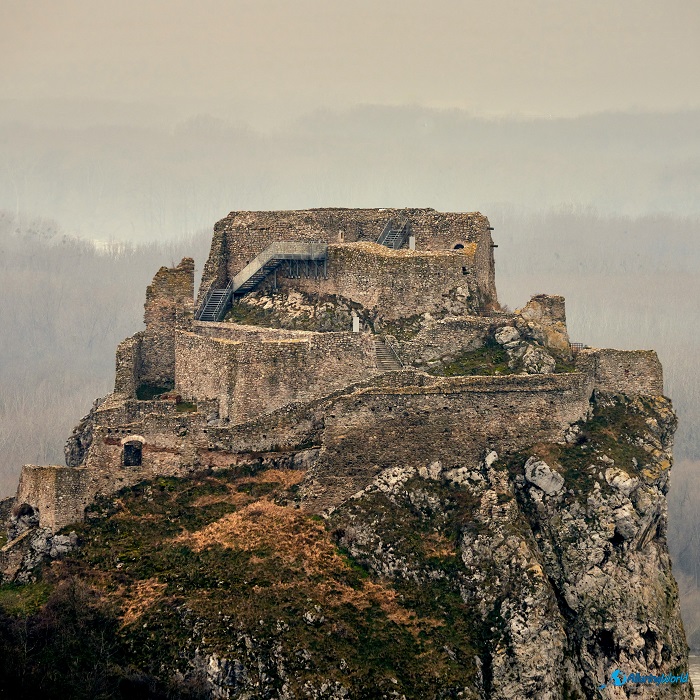Devín Castle is a formidable historical fortress that is perched on a dramatic cliff overlooking the confluence of the Danube and Morava Rivers in the Borough of Devín, in the western part of the capital city of Bratislava, within the western part of the Slovak Republic. Known for its strategic location and significant role in regional history, Devín Castle remains one of Slovakia’s most iconic and well-preserved medieval structures which with its towering ruins and commanding position continue to attract visitors and historians alike, offering a glimpse into the complex history of Central Europe.

The origins of Devín Castle date back to ancient times, with evidence suggesting that the site was used as a strategic fortification as early as the 1st century AD. The strategic significance of the location is evident due to its position on a cliff overlooking the confluence of the Danube and Morava Rivers, this specific vantage point provided a commanding view over the surrounding landscape and in fact, was a crucial point for monitoring and controlling trade routes and military movements. The castle’s strategic importance has been recognized further by various cultures and rulers throughout history.
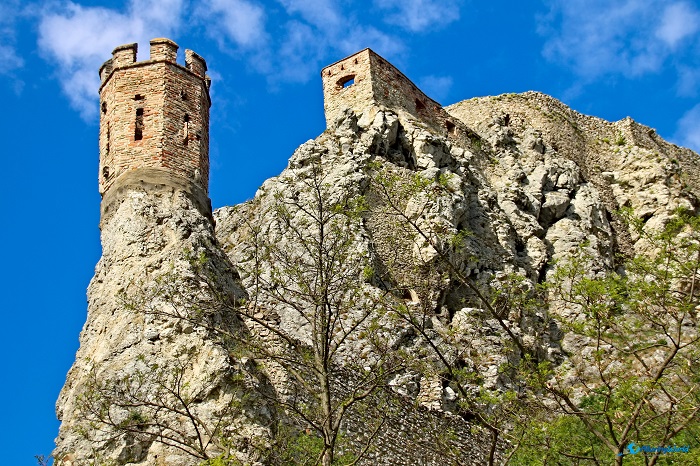
Devín Castle’s earliest structure dates to the 9th century, during the Great Moravian Empire. This empire was a Slavic state that existed from the 9th to the early 10th century, where the Moravians built a fortification on the site to defend their territory and assert control over the region. Archaeological excavations at the site have uncovered remnants of this early fortification, including parts of walls and defensive structures.
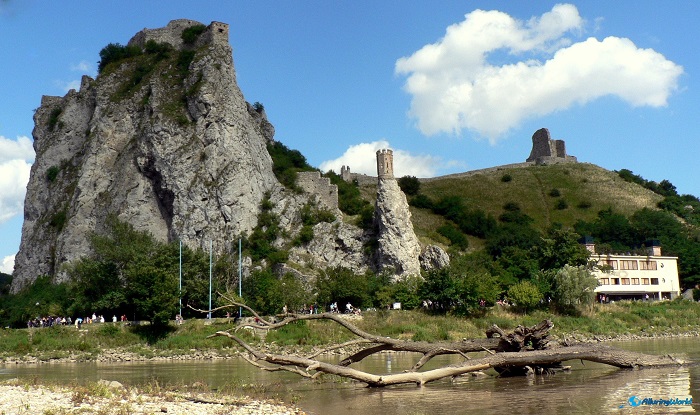
During the 11th and 12th centuries, the castle underwent significant expansions and renovations and it was during this time that the structure evolved from a rudimentary fortification into a more sophisticated medieval castle. The construction included the addition of stone walls, towers, and a keep, reflecting advancements in military architecture and the growing importance of the fortress.

One of the most notable periods in the history of Devín Castle was during the reign of the Hungarian King Bela IV in the 13th century. Following the Mongol invasions of Central Europe, Bela IV sought to strengthen the defenses of the Hungarian Kingdom, of which Devín Castle was an important part, hence why the castle was extensively rebuilt and fortified to protect against potential invasions and raids. It was during this period that the castle became a key military stronghold and played a crucial role in the defense of the kingdom.
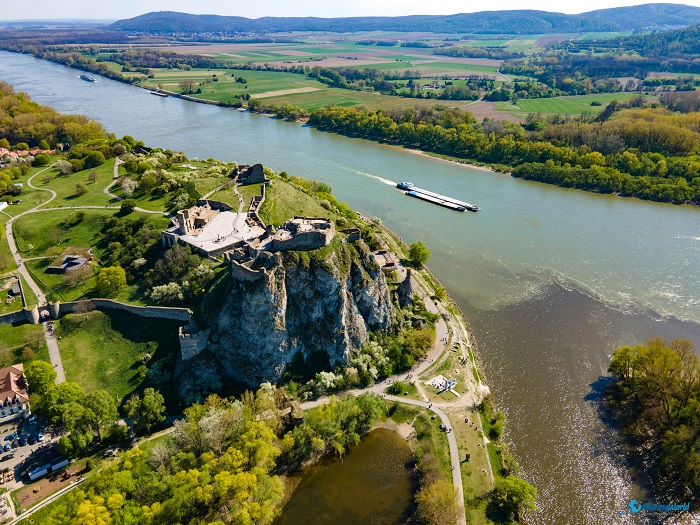
The castle’s construction utilized a variety of materials, including locally sourced limestone and sandstone. These materials were not only practical but also symbolic, reflecting the region’s natural resources and architectural traditions. The castle’s walls, towers, and gates were constructed with thick, robust stone to withstand sieges and attacks, and the design incorporated defensive features such as crenellations, arrow slits, and fortified gates to enhance the castle’s resilience.
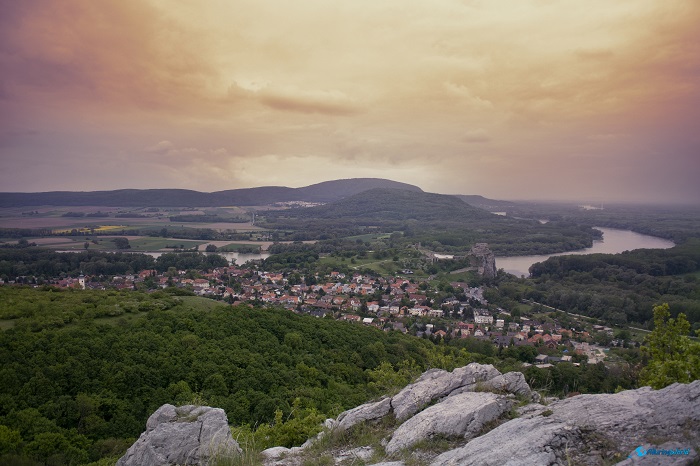
The strategic importance of the castle continued through the medieval period and into the Renaissance as it was a focal point of various military conflicts and political power struggles. One of the most significant events in the castle’s history occurred during the 15th century when it was involved in the Hussite Wars. The Hussites, a religious reformist movement, sought to challenge the established order and conducted several military campaigns in Central Europe. Still, Devín Castle was a key battleground in these conflicts, and its defenses were put to the test.
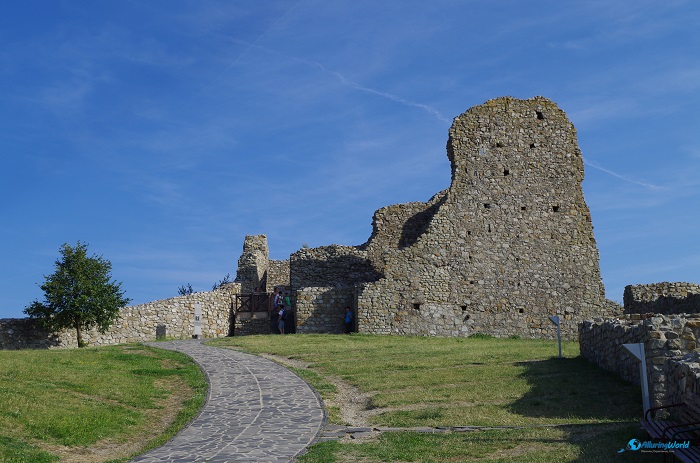
One notable battle involving the castle during the Hussite Wars was the 1431 confrontation between Hussite forces and Hungarian troops. As the castle is located at a key junction, it was targeted by the Hussite army under the command of Jan Žižka, one of the prominent leaders of the Hussite movement. Žižka, known for his innovative military tactics, sought to capture Devín Castle to secure the strategic high ground and disrupt Hungarian control of the region.
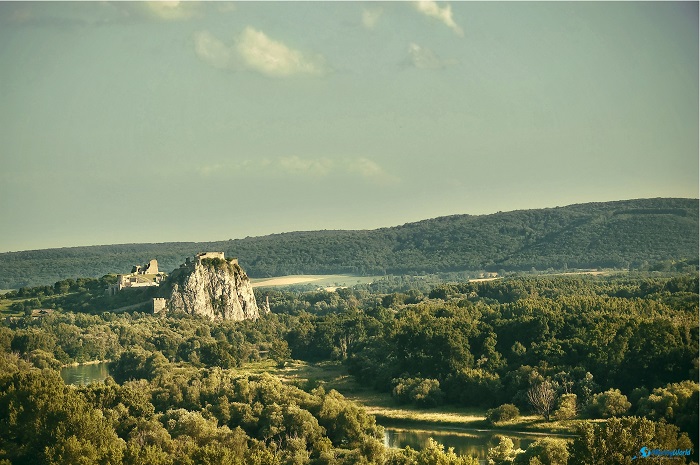
The battle was fiercely contested, with the Hussites employing their trademark war wagons and disciplined infantry to challenge the defenders. Despite their valiant efforts, the Hungarian forces, fortified within the castle and supported by reinforcements, managed to fight off the Hussite assault. The inability of Žižka’s forces to capture Devin Castle highlighted the castle’s formidable defenses and its critical role in the broader conflict, and this battle underscored the strategic significance of Devin Castle in the Hussite Wars, as control over such strongholds could sway the balance of power in the region.
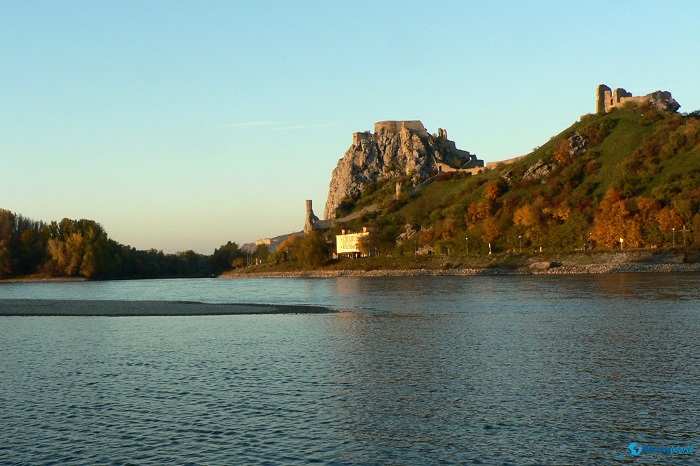
In addition to its military significance, Devín Castle also served as a political and administrative center because it was a royal residence and a base for managing the surrounding territories. The castle’s location was ideal for overseeing trade routes along the Danube River and controlling access to the region and it was also a center for diplomacy and negotiations, hosting various meetings and conferences throughout its history.

Despite its strategic importance, Devín Castle sadly faced periods of decline and neglect. By the late 17th century, the castle had fallen into disrepair due to changing political and military priorities, and the castle was further damaged during the Austro-Turkish Wars and later by a series of earthquakes and natural disasters. The once-proud fortress was unfortunately left in ruins, and its military and administrative functions were gradually abandoned.
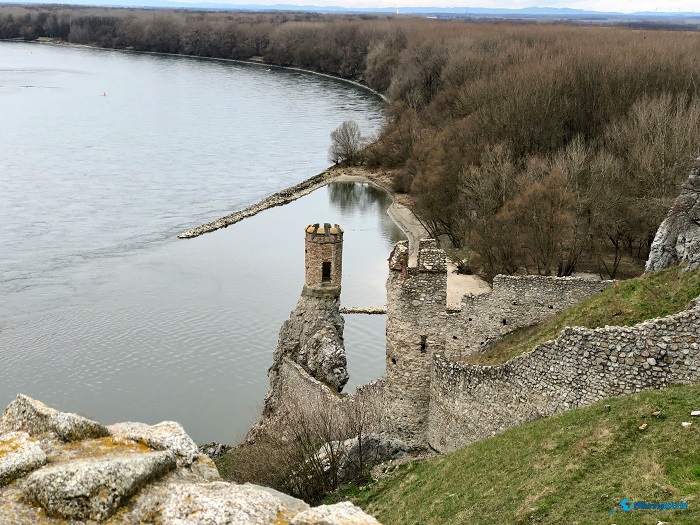
In the 20th century, efforts were made to preserve and restore Devín Castle as it became a symbol of national pride and cultural heritage for Slovakia. The numerous restoration projects focused on stabilizing the remaining structures and preserving the historical integrity of the site. Nowadays, today Devín Castle stands as a testament to the rich history of Central Europe and serves as a popular tourist destination.
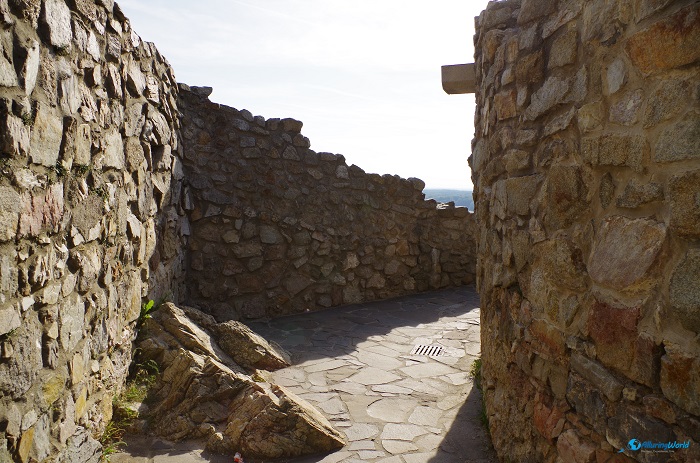
Visitors to Devín Castle can explore the extensive ruins and learn about the castle’s history through informative exhibits and guided tours. The castle’s layout includes several notable features, including the main keep, the outer walls, and the remains of various towers and defensive structures, however, the panoramic views from the castle provide a breathtaking backdrop, allowing visitors to appreciate the strategic location of the fortress and its role in regional history.
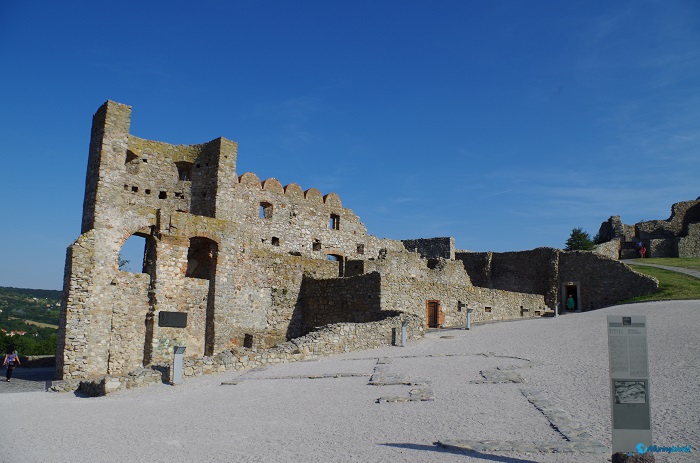
To reach Devín Castle, visitors can travel from the nearby city of Bratislava, because the castle is located approximately 10 km (6 mi) from the city center, making it easily accessible by car or public transportation, another alternative are buses and trains that run regularly between Bratislava and Devín, with additional options for guided tours and transportation services. The journey to the castle takes visitors through picturesque landscapes and offers opportunities to experience the natural beauty of the region.
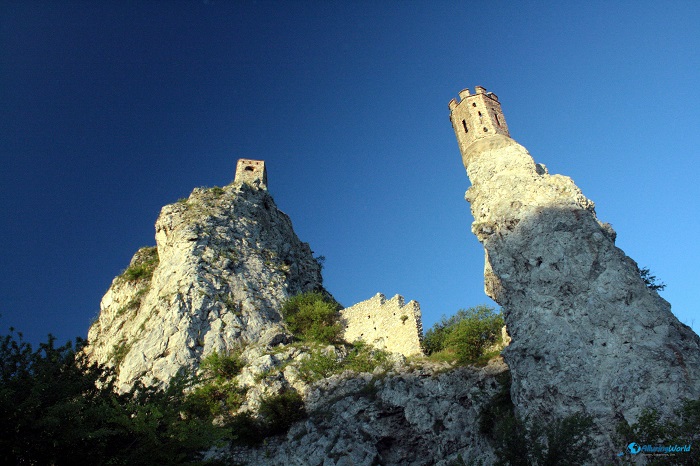
In addition to its historical and architectural significance, Devín Castle is a cultural and recreational destination. The surrounding area features hiking trails and scenic viewpoints, providing opportunities for outdoor activities and exploration, and the castle’s location along the Danube River adds to its appeal, offering opportunities for river cruises and boat trips that allow visitors to experience the fortress from a different perspective.
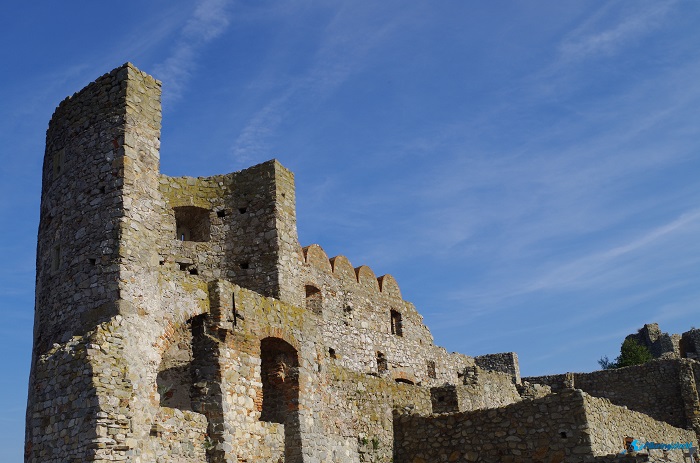
In conclusion, Devín Castle is a remarkable historical and architectural landmark that embodies the rich heritage of Central Europe. Its strategic location, military significance, and architectural evolution reflect the complex history of the region and the enduring legacy of the fortress, and as a symbol of national pride and cultural heritage, Devín Castle continues to captivate visitors with its grandeur and historical significance, offering a unique glimpse into the past and a testament to the enduring spirit of Slovakia.
